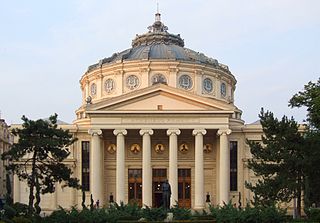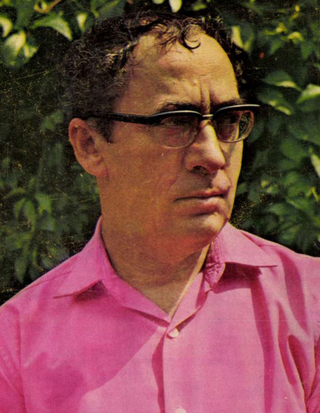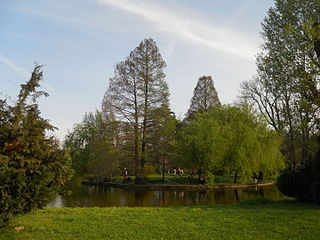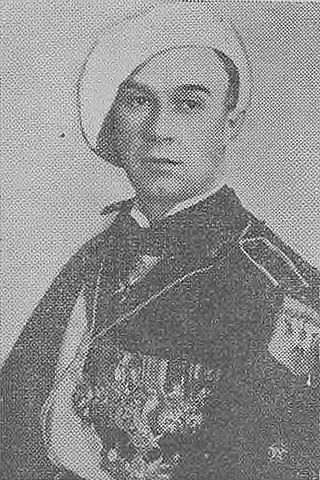
Bucharest is the capital and largest city of Romania. It is described as the cultural, financial, entertainment, and media centre in the country with a significant influence in Eastern Europe as well. In geopolitical regards, Bucharest has been and still is an important capital of a state situated in Central and Eastern Europe, where noteworthy summits had taken place. It is also a city with a significant influence in terms of education, tourism, research, technology, health care, art, fashion, sports, and politics. Bucharest is a major economic center in Romania, with a diverse and growing economy that includes industries such as IT, finance, and manufacturing. The city has also seen significant investment in infrastructure, with new roads, bridges, and public transportation systems being built to improve connectivity and mobility. It is located in the south-east of Romania, on the banks of the Dâmbovița river, less than 60 km (37.3 mi) north of the Danube River and the border with Bulgaria. It is also one of the most populated cities of the European Union (EU) within city limits and the most populated capital in Eastern Europe. It was the capital of Wallachia from 1659 to 1859 and the capital of the United Principalities of Moldavia and Wallachia from 1859 to 1881.

The Palace of the Parliament, also known as the House of the Republic or People's House/People's Palace, is the seat of the Parliament of Romania, located atop Dealul Spirii in Bucharest, the national capital. The Palace reaches a height of 84 m (276 ft), has a floor area of 365,000 m2 (3,930,000 sq ft) and a volume of 2,550,000 m3 (90,000,000 cu ft). The Palace of the Parliament is one of the heaviest buildings in the world, weighing about 4,098,500,000 kilograms, also being the second largest administrative building in the world. (The Great Pyramid of Giza at about 5.75 million tons is about 40% heavier.) The building was designed and supervised by chief architect Anca Petrescu, with a team of approximately 700 architects, and constructed over a period of 13 years (1984–97) in modernist Neoclassical architectural forms and styles, with socialist realism in mind. The Palace was ordered by Nicolae Ceaușescu (1918–1989), the president of Communist Romania and the second of two long-ruling heads of state in the country since World War II, during a period in which the personality cult of political worship and adoration increased considerably for him and his family.

Marin Preda was a Romanian novelist, post-war writer and director of Cartea Românească publishing house. He is considered by some to be the most important novelist in post-World War II Romanian literature. However, he has also garnered an ambivalent perception in post-socialist Romania: Preda's final novel, Cel mai iubit dintre pământeni, published just a couple of months before his death, is considered a daring critique of the beginnings of communism in Romania; in contrast, Preda was well-regarded by party leaders and received high distinctions in socialist Romania, and did not position himself as an open opponent of the regime. At the time of his death, Marin Preda was a member of the Great National Assembly.

George "Gigi" Becali is a Romanian businessman, writer and former politician and convict, mostly known for his ownership of the FCSB football club.
Adevărul is a Romanian daily newspaper, based in Bucharest. Founded in Iași, in 1871, and reestablished in 1888, in Bucharest, it was the main left-wing press venue to be published during the Romanian Kingdom's existence, adopting an independent pro-democratic position, advocating land reform, and demanding universal suffrage. Under its successive editors Alexandru Beldiman and Constantin Mille, it became noted for its virulent criticism of King Carol I. This stance developed into a republican and socialist agenda, which made Adevărul clash with the Kingdom's authorities on several occasions. As innovative publications which set up several local and international records during the early 20th century, Adevărul and its sister daily Dimineața competed for the top position with the right-wing Universul before and throughout the interwar period. In 1920, Adevărul also began publishing its prestigious cultural supplement, Adevărul Literar și Artistic. By the 1930s, their anti-fascism and the Jewish ethnicity of their new owners made Adevărul and Dimineața the targets of negative campaigns in the far right press, and the antisemitic Octavian Goga cabinet banned both upon obtaining power in 1937. Adevărul was revived by Barbu Brănișteanu after World War II, but was targeted by Communist Romania's censorship apparatus and again closed down in 1951.

The Bucharest Botanical Garden, now named after its founder, Dimitrie Brândză, is located in the Cotroceni neighbourhood of Bucharest, Romania. It has a surface of 18.2 hectares, including 4,000 square metres of greenhouses, and has more than 10,000 species of plants.

Scînteia was the name of two newspapers edited by Communist groups at different intervals in Romanian history. The title is a homage to the Russian language paper Iskra. It was known as Scânteia until the 1953 spelling reform, which replaced the letter  with the phonologically identical Î in all cases.

The Dâmbovița Center is an unfinished building in Bucharest, Romania, near Cotroceni, on the shore of the Dâmbovița River. Casa Radio was erected during the late 1980s by the Communist regime on land which before the Second World War was the location of the Bucharest Hippodrome. The building was intended to serve as a museum of the Romanian Communist Party. The balcony of the unfinished building facing Știrbei Vodă Street was used by the Romanian dictator Nicolae Ceaușescu on 23 August 1989 to watch the festivities marking Romania's National Day. It was the last Communist-style parade in Romania.

The National Theatre Bucharest is one of the national theatres of Romania, located in the capital city of Bucharest.

Carol I Park is a public park in Bucharest, Romania, named after King Carol I of Romania. A French garden located in the southern-central area of Bucharest, partly on Filaret hill, originally capable of hosting various exhibitions, it suffered considerable modifications during the communist regime, including a name change to Parcul Libertății.
Revolution Square is a square in central Bucharest, on Calea Victoriei. Known as Palace Square until 1989, it was renamed after the Romanian Revolution of December 1989. The former Royal Palace, the Athenaeum, the Athénée Palace Hotel, the University of Bucharest Library and the Memorial of Rebirth are located here. The square also houses the building of the former Central Committee of the Romanian Communist Party. In 1990, the building became the seat of the Senate and since 2006 it houses the Ministry of Interior and Administrative Reform.

A statue of Ion Luca Caragiale, sculpted by Constantin Baraschi, is located on Maria Rosetti Street in central Bucharest, Romania. It is placed in front of the house where the dramatist and short story writer Ion Luca Caragiale once lived.
Piața Constituției is one of the largest squares in the centre of Bucharest, Romania. The square is standing face-to-face with the Palace of the Parliament and it is bisected by Bulevardul Unirii and by Bulevardul Libertății.

Nicușor Dan is a Romanian activist, mathematician, former member of the Chamber of Deputies of Romania as well as founder and former leader of the Romanian political party Save Romania Union (USR). He is currently serving as the Mayor of Bucharest following the 2020 Romanian local elections as independent politician.
Cycling in Bucharest is less popular than in other European cities, in part due to the lack of cycling infrastructure and because of the low taxes for owning and driving a car. Nevertheless, cycling became increasingly common during the 2010s and thousands of cyclists participate in Critical Mass events, protesting against the Municipality of Bucharest's opposition to building segregated cycle facilities.

General Teofil Gh. Sidorovici was one of the commanders of the Straja Țării (Watchmen), a paramilitary youth organization in the Kingdom of Romania, created in 1935, and Minister of National Propaganda in the sixth Gheorghe Tătărescu cabinet, after the resignation of Constantin C. Giurescu.
Ion Șerb, also Ioan Șerb was a general of the Socialist Republic of Romania accused of espionage for the Soviet Union.

Liberation Day, officially known as the Liberation from Fascist Occupation Day was observed on 23 August in Communist Romania to celebrate the 1944 Romanian coup d'état, the event that caused Romania to leave the Axis in World War II and marked the beginning of the Soviet occupation of Romania. It coincides with the European Day of Remembrance for Victims of Stalinism and Nazism.



















